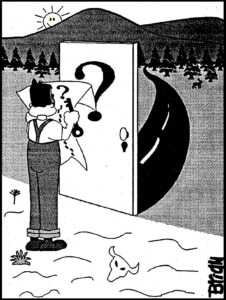Recovery—harder than it sounds & easier than you think
Whether you are trying to overcome an eating disorder or beat an addiction, the goal of recovery is to leave illness behind. That means no longer engaging in behaviors that are harmful to yourself.
 Today I want to talk about the difference between relapse and recovery. It is not as obvious as you may think. In the popular media, recovery is usually presented as a state of having fully left behind whatever behaviors were problematic. For instance, if you are fighting Bulimia Nervosa, that means you no longer binge or purge—at all. If you are fighting an addiction, recovery is defined as total abstinence. That is certainly desirable!
Today I want to talk about the difference between relapse and recovery. It is not as obvious as you may think. In the popular media, recovery is usually presented as a state of having fully left behind whatever behaviors were problematic. For instance, if you are fighting Bulimia Nervosa, that means you no longer binge or purge—at all. If you are fighting an addiction, recovery is defined as total abstinence. That is certainly desirable!
However, with very rare exceptions people do not go from disordered anything to capital R Recovery in a nice linear fashion. The reality is quite different.
Recovery is a messy process.

We move forward, slip backward, get stuck, and doggedly push through and around obstacles as they arise.
What makes recovery hard?
Having made the decision that you want recovery, there are two things that make it so difficult to grab onto:
- The most troublesome is when you buy into the idea that once you commit to recovery, you must not screw up, and if you do screw up, you are no longer in recovery (i.e., you’ve fallen off the wagon). The problem here is that you are going to slip up (unless you are super-human in which case you don’t need to be reading this). The belief that recovery does not include screw ups positions you to give up when you inevitably do screw up. You are going to slip. As I explain below, those slips are a critical part of recovery.
- Whether problematic eating or addiction, there are a set of habits, over-practiced cognitions and behaviors, driving the disorder. Decision, commitment, motivation, support, determination, attention—all are helpful. But none are sufficient. To truly move from disorder into recovery requires you identify and modify those cognitive and behavioral habits that keep you stuck in disorder. (More about that below.)
What makes recovery easy?
Recovery becomes easier and more attainable when you embrace the fact that it does not require perfection. It requires you to elbow your way out of your comfort zone, clamp down on ingrained habits, and stretch yourself to practice new ways of being. It is impossible to do this without mistakes.
One of the key things that makes comfortable recovery attainable is recognizing mistakes for what they are—mistakes. They are not signs that you cannot do this; they are not relapses. Mistakes are lapses, slips in the road. More importantly, lapses signify that you are doing something difficult and complicated—and that is a win!

I knew a psychologist years ago who, when his patients reported they had messed up in their self-care plans, would jump up and do a happy dance around the office. While I typically reserve my dancing for the ballroom, I totally agree with him that lapses are great things!
The value of lapses
Every time you make a mistake you have the opportunity to learn a little more about what makes you tick. If you take the time to reflect on what got in your way and how you reacted, you can turn that lapse into self-knowledge and strength. As a result, what initially feels like a dead-end to your self-care plans can be resuscitated and move you forward into recovery.
Three step CPR
 Turning a slip into a strength requires you to Contextualize, Plan, and Rehearse (CPR). This strategy is explained in detail and illustrated with case examples in A Diet is the Last Thing You Need. Here is the overview to get you started.
Turning a slip into a strength requires you to Contextualize, Plan, and Rehearse (CPR). This strategy is explained in detail and illustrated with case examples in A Diet is the Last Thing You Need. Here is the overview to get you started.
- Contextualize—Examine in detail the setting of the slip. Look closely at everything about the situation and about what you did and thought. Develop as detailed a picture as possible. Be sure to describe where and when the lapse occurred, who you were with, how you were feeling, and what thoughts ran through your mind. Also make note of your expectations as you gave in to temptation—how did you expect to feel now and later if you resisted and if you gave in. The more aware you are of all the big and little triggers, the more power you will have over them.
- Plan—Once you have a pretty good picture of what triggered you to abandon your self-care plans, explore other ways you can handle similar situations in the future. To devise a better plan, think about aspects of the situation itself that you might be able to modify or eliminate next time, and what actions and thoughts of your own that can be modified. It helps to think about this process as writing a script of what happened based on your answers to the Contextualize questions, then revising the script with healthier actions and thoughts so that similar future circumstances do not trigger lapses. In other words, script a new plan.
- Rehearse—If you have never played piano and I showed you the keys to press to play Beethoven’s Fifth Symphony, would you be able to play that music beautifully right away? No. Heck no! You must practice, rehearse, do it again and again until the movements become natural. The same principle applies to cognitive and behavioral movements. For you to effectively implement your plan, you must rehearse. Imagine the situation as you contextualized it and imagine yourself responding with your new script. If you do this often enough, you will find yourself navigating this type of situation more and more effectively.
Why “into” and not “to” recovery?
Good question! There is an important conceptual difference between moving to recovery and moving into recovery. If you are moving “to” recovery, the implication is that recovery is an end-point, a static place from which you must not move or you will have fallen out it. That brings us back to the argument I made at the beginning of this post—recovery is a messy process. It is not linear. It requires an awful lot of effort. Sometimes those efforts work well on the first try, and often they work well as learning opportunities.
If you are moving into recovery, the implication is that you are entering a space in which you can move around. Sometimes you hit the nail on the head every time you swing your (metaphorical) self-management hammer. At other times, you lapse and have to apply CPR to the mess. Moving into recovery allows you the space to be human, to err, and to become stronger as a result.
Laugh a little!
One of the things that does not come up often enough in most therapies and self-help programs is the reminder not to take yourself too seriously. When you screw up, as you inevitably will, you can waste a lot of time and energy beating yourself up. (See Not Ok is Ok!) Or you can acknowledge the error, chalk it up to being human, and possibly have a laugh as you sing, “Oops, I did it again.” Then pat yourself on the back for recognizing the issue, use CPR to figure out how to turn this into a win, and take the best next step.

